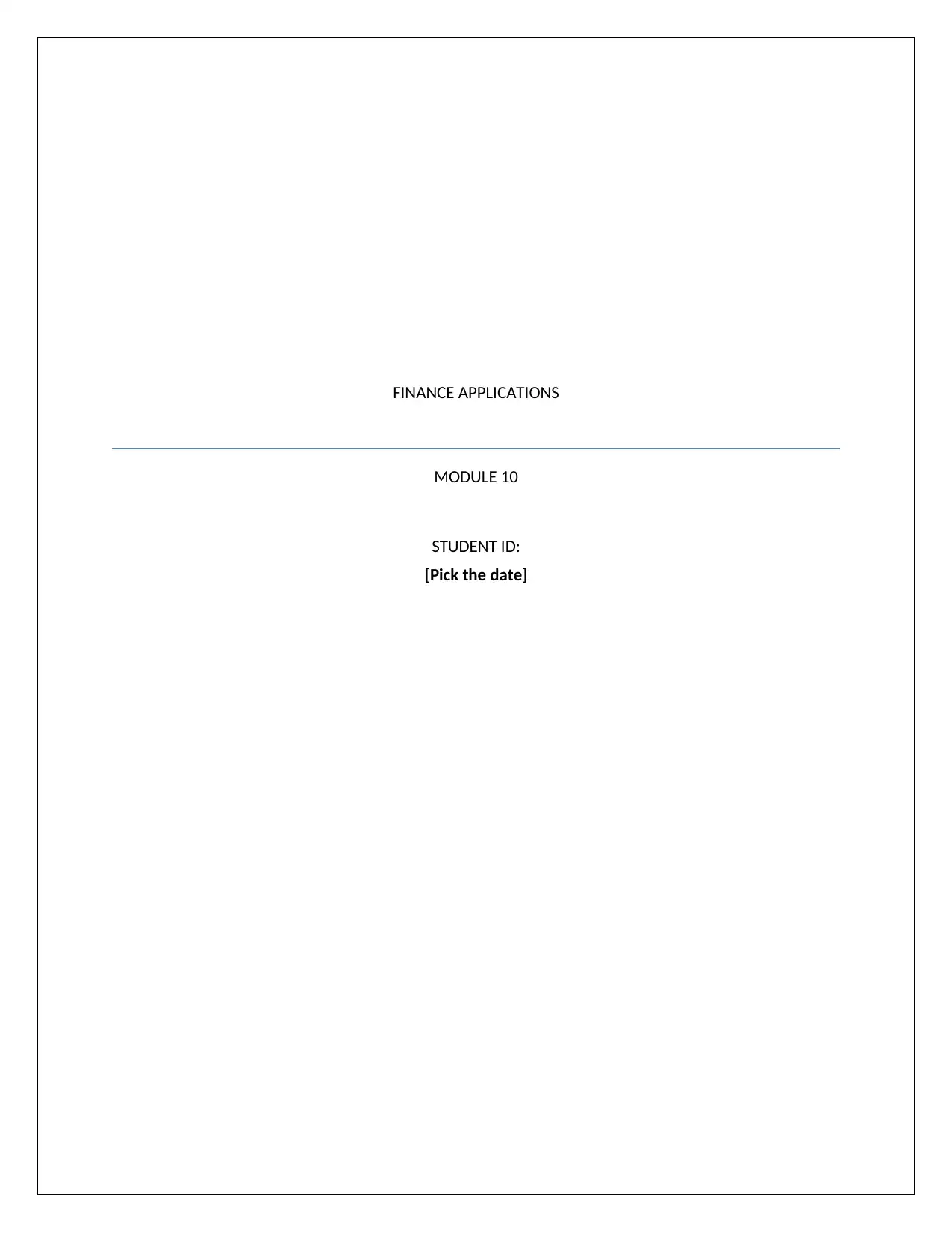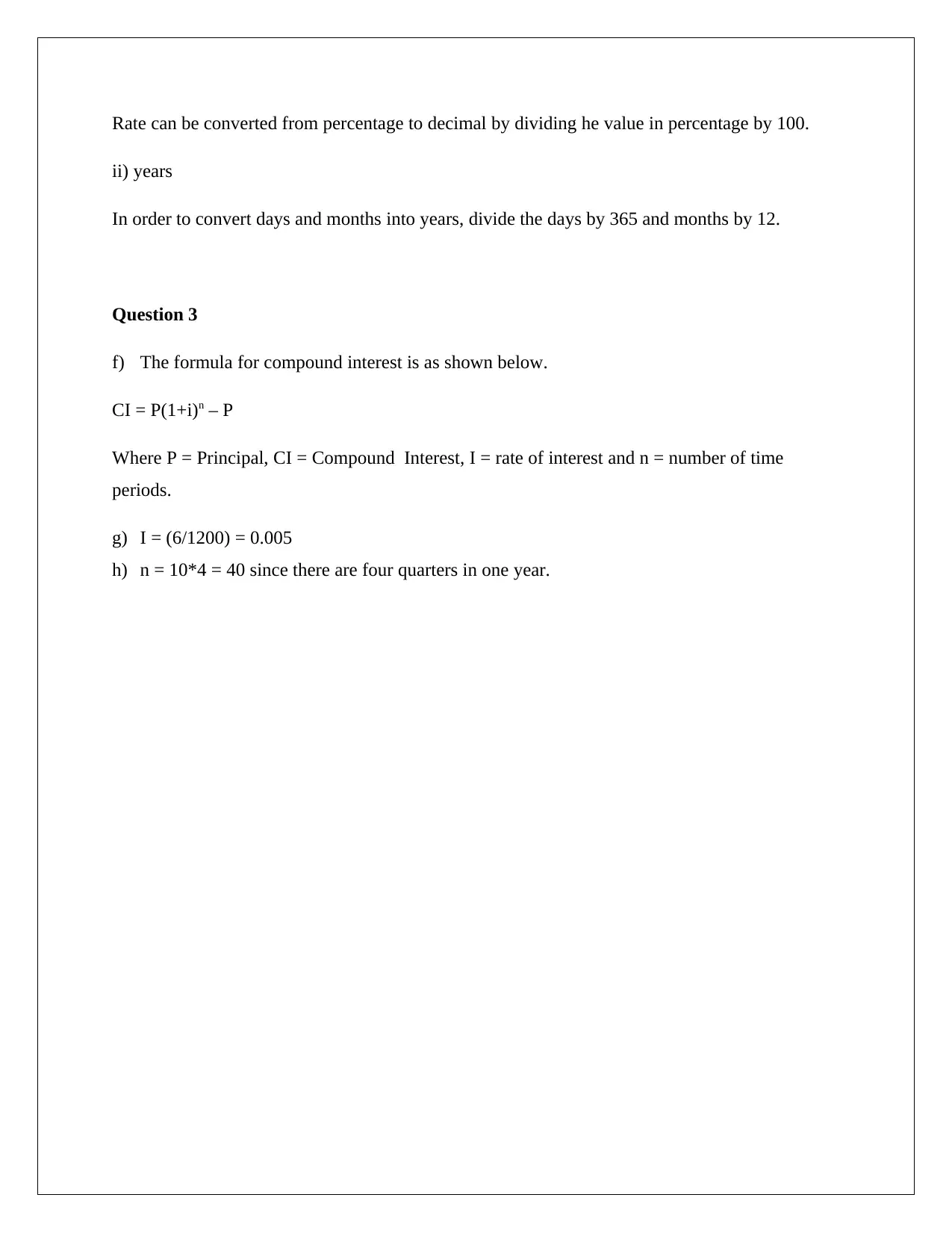Finance Applications: Module 10 Assignment Solution
VerifiedAdded on 2022/11/26
|3
|306
|30
Homework Assignment
AI Summary
This assignment provides a detailed solution to the Finance Applications Module 10, covering key financial concepts. The solution begins by addressing depreciation, including both straight-line and reducing-balance methods, and provides the relevant formulas, variable identifications, and formula transpositions. It then delves into percentage calculations and simple interest, explaining how to convert percentages to decimals and time units to years. The assignment concludes with compound interest, providing the formula and demonstrating how to substitute values for different compounding frequencies and time periods. This comprehensive solution offers a clear understanding of essential financial concepts and calculations, making it a valuable resource for students studying finance.
1 out of 3








![[object Object]](/_next/static/media/star-bottom.7253800d.svg)